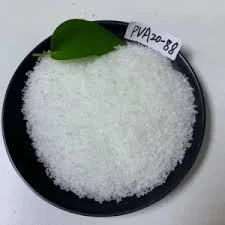Understanding Cellulose Ethers HEC, HEMC, and HPMC
Cellulose ethers are a group of chemical compounds derived from cellulose, the most abundant organic polymer on Earth, primarily found in the cell walls of plants. These ethers play a crucial role in various industries due to their unique properties, such as water solubility, thickening abilities, and excellent compatibility with various substances. Among the myriad of cellulose ethers available, Hydroxyethyl cellulose (HEC), Hydroxyethyl Methylcellulose (HEMC), and Hydroxypropyl Methylcellulose (HPMC) stand out for their extensive applications and beneficial attributes.
Hydroxyethyl Cellulose (HEC)
HEC is a water-soluble polymer derived from cellulose through the substitution of hydroxyl groups with hydroxyethyl groups. This modification enhances its solubility in water and its ability to form gels. HEC is widely used in the construction industry, particularly in cement-based formulations, where it serves as a thickener and water-retaining agent. Its ability to improve the workability of mortars and plasters while preventing cracking and enhancing adhesion makes HEC invaluable in this field.
In addition to construction, HEC finds its applications in cosmetics and personal care products. Its thickening and stabilizing properties contribute to the texture and viscosity of creams, lotions, and shampoos. Moreover, HEC is employed in pharmaceuticals as an excipient to enhance the solubility and bioavailability of active ingredients.
Hydroxyethyl Methylcellulose (HEMC)
HEMC is a derivative of cellulose that combines the characteristics of both hydroxyethyl and methyl groups. This unique combination endows HEMC with properties that make it an excellent thickening and stabilizing agent in various formulations. Its solubility in both hot and cold water allows it to be used in a wide array of products, including food, pharmaceuticals, and construction materials.
cellulose ether hec hemc hpmc

In the food industry, HEMC acts as a thickener and texturizer, improving the mouthfeel and consistency of sauces, dressings, and dairy products. Additionally, its emulsifying properties help maintain the stability of emulsions, preventing separation. In pharmaceuticals, HEMC is used as a binder in tablet formulations and as a controlled-release agent for various drugs.
Hydroxypropyl Methylcellulose (HPMC)
HPMC is another significant cellulose ether, characterized by the presence of hydroxypropyl and methyl groups. This compound is known for its remarkable ability to form gels and retain water, making it indispensable in numerous industries. HPMC is commonly used in the construction sector as an additive for mortars, tiles, and adhesives. Its water-retaining properties enhance the workability and longevity of construction materials, contributing to improved performance in various applications.
Furthermore, HPMC's versatility extends to the food industry, where it serves as a thickening agent, stabilizer, and emulsifier. Its ability to retain moisture is beneficial in baked goods, helping to enhance freshness and texture. Additionally, HPMC is utilized in the pharmaceutical industry, mainly as a film-forming agent for coatings, as well as in controlled-release formulations due to its gel-forming capabilities.
Conclusion
The diverse applications of cellulose ethers, particularly HEC, HEMC, and HPMC, underscore their significance in various sectors. These compounds not only enhance the texture and stability of products but also improve performance and usability across the board. As industries continue to evolve, the demand for innovative solutions will likely propel the further development and application of these cellulose derivatives. The ongoing research into their properties and potential applications promises to unveil new possibilities, particularly in sustainable materials and eco-friendly formulations, paving the way for a more innovative and sustainable future.
In summary, HEC, HEMC, and HPMC epitomize the adaptability and utility of cellulose ethers, marking them as essential components in modern industrial applications—from construction and food to pharmaceuticals and personal care products. As we continue to explore the potential of these remarkable compounds, we can expect to see an increase in their use and their contributions to enhancing the quality and efficiency of various products across numerous sectors.
-
The Versatility of Industrial Additives: Mhec, Hpmc, And Wall Putty SolutionsNewsMar.28,2025
-
The Importance of HPMC in Modern IndustriesNewsMar.28,2025
-
Partnering with Reliable Manufacturers for Optimal ResultsNewsMar.28,2025
-
Enhancing Construction Performance with Redispersible Polymer PowdersNewsMar.28,2025
-
Enhancing Construction and Household Products with Advanced AdditivesNewsMar.28,2025
-
Building Strong Foundations with Key Construction MaterialsNewsMar.28,2025






